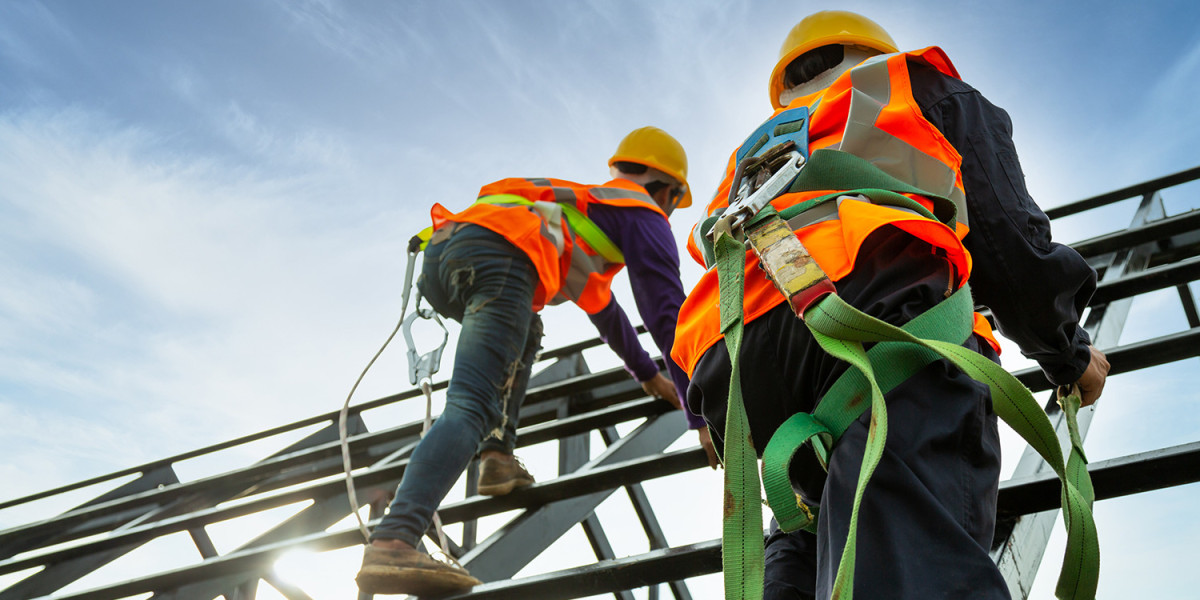The construction people are typically the ones who commit high risks subconsciously. They frequently get into work environments that are characterized by psychological effects, culture, economic pressure, inappropriate safety arrangements, and no monitoring. Although these risks may be unintentional or due to situations, they can cause accidents or injuries, and even death.
Understanding Risk-Taking in Construction
The behaviour of construction workers that is considered risky is quite common, and it results in them finding themselves amongst the most dangerous professions in the world. The workers usually defy the safety code while they are carrying out their tasks. The actions, such as bypassing protective gear or working in unsafe conditions, are usually the result of complex motivations and systemic issues. Certainly, to make the jobsite safer, we have to know the reasons behind the phenomenon of risk-taking and not only blame the workers.
The Nature of Construction Work
Constructing is directly related to danger. Workers regularly have to face:
- Working at high places
- Using heavy machinery
- Being exposed to weather that is too hot or too cold
- Working with unstable structures
Workplaces are very dynamic and sometimes unpredictable, so workers need to constantly adapt to new situations. In such conditions, safety protocols may be disregarded if speed and adaptability are considered to be more important.
Pre-planning plays a vital role in project success. A blueprint takeoff service provides reliable material calculations, helping contractors avoid delays and unexpected changes during construction.
Psychological Factors Behind Risk-Taking
Overconfidence and Familiarity
Some of the experienced workers may very well be accident-prone without even realizing it because of their overconfidence that was built over the years on the job, which, however, leads them into a danger of overconfidence and the normalization of dangerous behaviors.
Thrill-Seeking Behavior
Some people are born with such a nature that they get their kicks from risky behavior and can't get enough of the challenge of going beyond the safety limits.
Peer Pressure and Workplace Culture
Construction workers often operate in close-knit crews where toughness is glorified. In such environments:
- They cannot even imagine being considered weak or lacking skills.
- New hires usually have a habit of duplicating the actions of those already there, especially if they do not follow the safety steps.
- It is sometimes the case that talking about unsafe things can even cause you to be isolated from others.
Productivity Demands and Deadlines
Tight schedules push workers to:
- Give up their breaks
- Work faster than the allowed speed limit
- Giving up part of the safety gear to save time
Training Deficiencies Table
Issue | Potential Risk |
Language barriers | Misinterpretation of safety rules |
One-time orientation | Forgetting procedures |
Lack of refreshers | Outdated knowledge |
Insufficient Supervision or Oversight
When management is not really interested or is going through a tough time:
- Unsafe actions are not solved
- Workers behave inappropriately
- Site checks are less frequent and less efficient
Unsatisfactory control leads to a situation where safety is no longer a must.
Financial Incentives and Economic Pressure
For a great number of people, and especially for those who are undocumented and have a low income, risky behavior is basically just trying to survive. The money that is given for working faster or longer can be the difference between being able/not being able to pay a bill.
Money that is directly connected with the economy, leading to the making of wrong/unwise choices:
- Pay based on the number of days or pieces of work
- Afraid of being fired
- Support their families
Inadequate Safety Equipment or Resources
In some places of work:
- Helmets, harnesses, or gloves are running out
- The equipment is old or not in good condition
- Workers share the tools,
Miscommunication on Construction Sites
Multilingual job sites are common. When communication fails:
- Instructions can be misunderstood
- Warnings may go unnoticed
- Emergency responses become disorganized
Employers must provide signage, training, and safety information in all applicable languages.
Lack of Enforcement of Safety Regulations
Safe practices might be at the core of a work site, but the enforcement of these policies could be another matter altogether. The regulatory bodies might:
- Conduct inspections infrequently
- Issue lenient penalties
- Be undermined by management
Due to the lack of strict enforcement, people may see that compliance with the rules is less important than they initially thought.
Complacency Due to Experience
People who have already done the job many times (say, 1,000 times) tend to forget:
- Safety updates
- Conditions of the site that have changed
- New possible threats to work
Relying too much on historical success is one of the main hidden dangers in the construction sector.
Influence of Subcontracting and Gig Work
Subcontractors are typically:
- Going for shorter periods of time
- Having no loyalty to the organization they work for
- Not attending safety training because of time shortage
Many projects with a decentralized structure make it necessary to have inconsistent standards and riskier behaviors.
Mental Health and Fatigue
Key Mental and Physical Stressors:
- Dert, anxieties, and traumas
- Excessive working hours and lack of sleep
- Consuming substances because of stress or pain
The fatigue leads to slowing of reaction time, impairment of judgment, and a decrease in situational awareness, thus errors will be made more often.
Poorly Designed Workflows and Jobsite Layout
Unsafe site design can lead to risky workarounds.
- Unmarked hazards
- Crowded equipment zones
- Inadequate lighting or signage
Contractors have to make sure that safety is considered in each step, so that they do not face any problems with infringement of regulations during the project.
Cultural Attitudes Toward Safety
In certain areas,
- Injuries have been downplayed or covered up.
- Safety has been regarded as a bothersome
- Only productivity is the criterion.
To transform such a culture, education, rewards, and responsibility must be kept in a continuous cycle.
Lack of Consequences or Previous Incidents
If accidents are infrequent or not reported, workers could think that the risks are minimal..
- Nothing bad has happened yet
- I’ve done this for years without issue
But statistics show that even one oversight can lead to tragedy.
Strategies to Mitigate Risk-Taking Behavior
What Can Be Done?
Strategy | Description |
Ongoing training | Monthly refreshers and toolbox talks |
Transparent reporting systems | Anonymous safety reporting is encouraged |
Investment in technology | Wearables, drones, and sensors to detect unsafe behavior |
Better planning tools | Use of takeoff services to reduce scope confusion |
Supervisor accountability | Regular audits and performance reviews |
Only through a mix of policy, culture change, and consistent leadership can risk-taking behavior be meaningfully reduced.
FAQs
1. What Are The Most Common Risks Construction Workers Take?
Working without PPE, ignoring fall protection, and bypassing lockout/tagout procedures are among the most frequent.
2. Can Poor Planning Lead To Risk-Taking Behavior?
Yes. Without proper preconstruction planning, workers often face unexpected challenges, prompting unsafe improvisation.
3. How Does The “Blueprint Takeoff Service” Help In Reducing Risk?
It ensures accurate estimation of materials and labor before work begins, helping avoid last-minute changes that lead to safety lapses.
4. Do Financial Incentives Encourage Unsafe Behavior?
Yes, bonuses and productivity-based pay can pressure workers to speed up or skip safety steps.
5. What Can Employers Do To Prevent Risk-Taking?
Provide consistent training, enforce safety policies, use modern planning tools, and foster an open safety culture.



